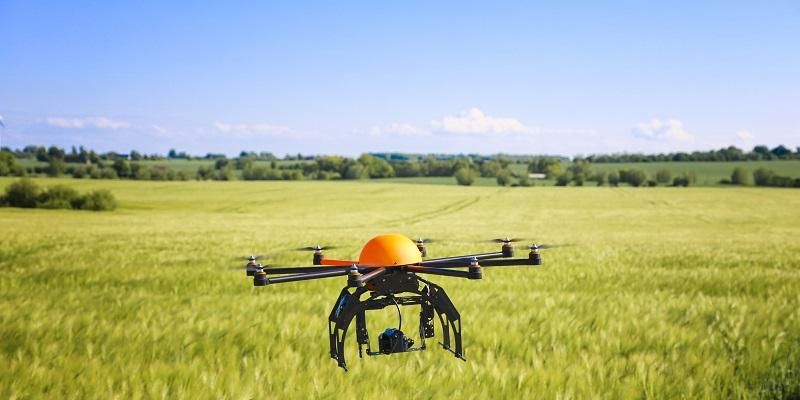Soil, water and crop sensors

The soil beneath our feet is one of humanity's most precious yet overlooked resources. Most of us tread it under foot without a second thought, but without carbon-rich, fertile soil, we could not hope to feed the billions of people spread across the planet.
Our researchers are looking for ways to make the most of soils around the world and manage them in ways that are more sustainable in a future where climate change and a growing human population will continue to place greater demands on them.
Understanding the impact of agricultural practices
This not only involves understanding how soils form in the first place, but what impact agricultural practices have on them. Heavy machinery, for example, can impact soil structure, changing its aeration and its ability to retain water.
Chemical inputs like fertilisers and pesticides can affect the billions of bacteria, fungi, nematodes, worms and even larger animals living within the soil. These organisms play a central role in soil health and function – as the health of a soil changes, so does its ability to support the plants we might choose to grow in it, along with its ability to provide other benefits such as carbon storage and flood prevention by holding onto water. Find out more about water@leeds, an interdisciplinary approach to tackling major water issues.
Our plant, water and soil scientists in the School of Electronic and Electrical Engineering, and the Faculty of Environment are developing sensors to help them gain new insights into this complex and interlinked ecosystem. These will also make it possible to monitor changes in soil, water and crops remotely, providing vital data that can inform decisions about how they can be managed.
Soil sensors
We are working on inexpensive sensors that can be deployed in fields to monitor conditions within the soil such as temperature, pH, salinity and moisture content in real time.
This data can then be transmitted over wireless networks back to a central point for analysis. Others, above the surface, can give further information about air temperature and air humidity at ground level. All this information can give a picture of soil health that can be combined with other research at the Centre for Plant Sciences to optimise the growth and sustainability of crop production.
Water sensors
Low cost wireless sensors can also be used to automatically monitor water quality at a field level all the way up to entire catchment areas. It is already possible to measure pH, electrical conductivity and cloudiness of water to gain information about nutrient content and particulate matter, but this often involves time consuming and costly sampling.
The remote sensors we are developing can reduce this dramatically. We are also working on new types of sensors that can focus on specific nutrients such as nitrates or ammonia. Others will be able to identify specific microorganisms and pathogens that might contaminate a water supply.
Crop sensors
Cameras using hyperspectral and multispectral imagery – where wavelengths of light beyond those visible to human eyes are captured – can provide a rich source of information about plant health and growth. We are developing imaging technology that can be used in fields or mounted on drones to provide insights into how crops are growing in different parts of a field and provide early warnings of disease. This will allow fertilisers and pesticides to be applied more sparingly in only the places where they are needed.
The information obtained from this kind of precision monitoring can not only inform farming practices so they have a lighter impact on the environment and reduce cost overheads but are also vital to help our researchers identify traits for our Future Crops initiative. This aims to develop plants that will not only be more resilient and productive in the face of future climate change, but also provide greater nutritional value for the growing human population.